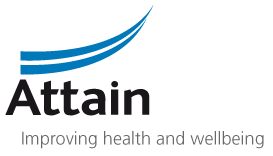Across the NHS, services are grappling with a common question: what will demand look like over the coming months and years and how can we manage it?
The COVID-19 national lockdown has created considerable disruption to the provision of cancer care. Performance figures reveal a worrying increase in waiting times and an adverse change in patients’ health seeking behaviour, leading to cancer being detected at later stages. Diagnostic capacity has had to adapt to this new world, with some clinics provided remotely, some capacity for COVID-19 being reserved in case of future spikes and the remaining capacity being limited by infection control measures on site, particularly when working with a cancer cohort.
We have experience of working in partnership with Cancer Alliances across the country to enable them to better understand their diagnostic demand and identify opportunities to optimally manage their staff, equipment and estate. Based on our lessons learnt and recent changes caused by COVID-19, we have identified five critical features that diagnostic demand and capacity models should include:
The model needs to be ‘live’
The model needs to be ‘live’ in order to stay relevant and be adjustable as situations evolve. There is much value in using agile models that can easily be modified if new and richer data becomes available or capacity suddenly changes significantly with, for example, the creation of hot and cold sites or subsequent waves of COVID-19. Adaptable models provide more sustainable value to services now more than ever as the world is changing fast.
The model needs to be practical
The model needs to be specific and practical. This is particularly true for models with an operational rather than strategic value. Models rich in granularity bring insightful understanding of where roadblocks lie, enabling evidence-based opportunities to optimise how services are delivered. Specificity also allows for different scenarios to be modelled, allowing services managers to understand the impact on their performance if a new radiographer is hired, fewer endoscopy rooms become available or patient pathways are modified.
The model needs to have a tight scope
The model needs to have a tight scope to ensure it remains clear and effective. Models should be built to answer targeted exam questions and only include content that is directly relevant to answering such questions. Keeping this principle in mind will ensure that models do not become difficult to navigate and the necessary insights remain easy to extract. When setting the scope for a forecast model for example, the scope should be to look at short forecast windows as opposed to a ten-year forecast which would, in current times, provide limited value.
The model needs to be specific
The model needs to be specific allowing it to adopt different slants on demand and capacity. Recently, there has been a growing need to map demand and capacity within specific pathways. For cancer services this can start from a patient’s visit to primary care with an onward diagnostic referral, all the way through treatment cycles for radiotherapy and chemotherapy and ending with follow up appointments. Demand and capacity models focusing on patient pathways can include a mapping of care across a wide geography including different levels of care. Providing clients with a transparent map of their system helps bring consensus across organisations as a shared understanding of challenges and opportunities is shaped.
The model needs to take a multi-faceted approach to demand
The model needs to take a multi-faceted approach to demand; for example, one of the fundamental components of capacity that has recently received heightened attention is workforce. We take a rigorous approach when evaluating local workforce capacity by looking into specialties, skill mix, banding, use of time, vacancies, spend on agency or bank staff, sick leave as well as metrics of productivity.
Overall, our approach to demand and capacity is based on working closely in partnership with local teams to develop tailored demand and capacity models. By transferring knowledge on how to adjust the variables included in the model, we ensure that our clients feel empowered to continue building on the solutions we have developed with them. We also work closely with senior leadership teams to ensure that the ‘so whats?’ of our findings translate to actionable opportunities and deliver tangible improvements to service delivery.

